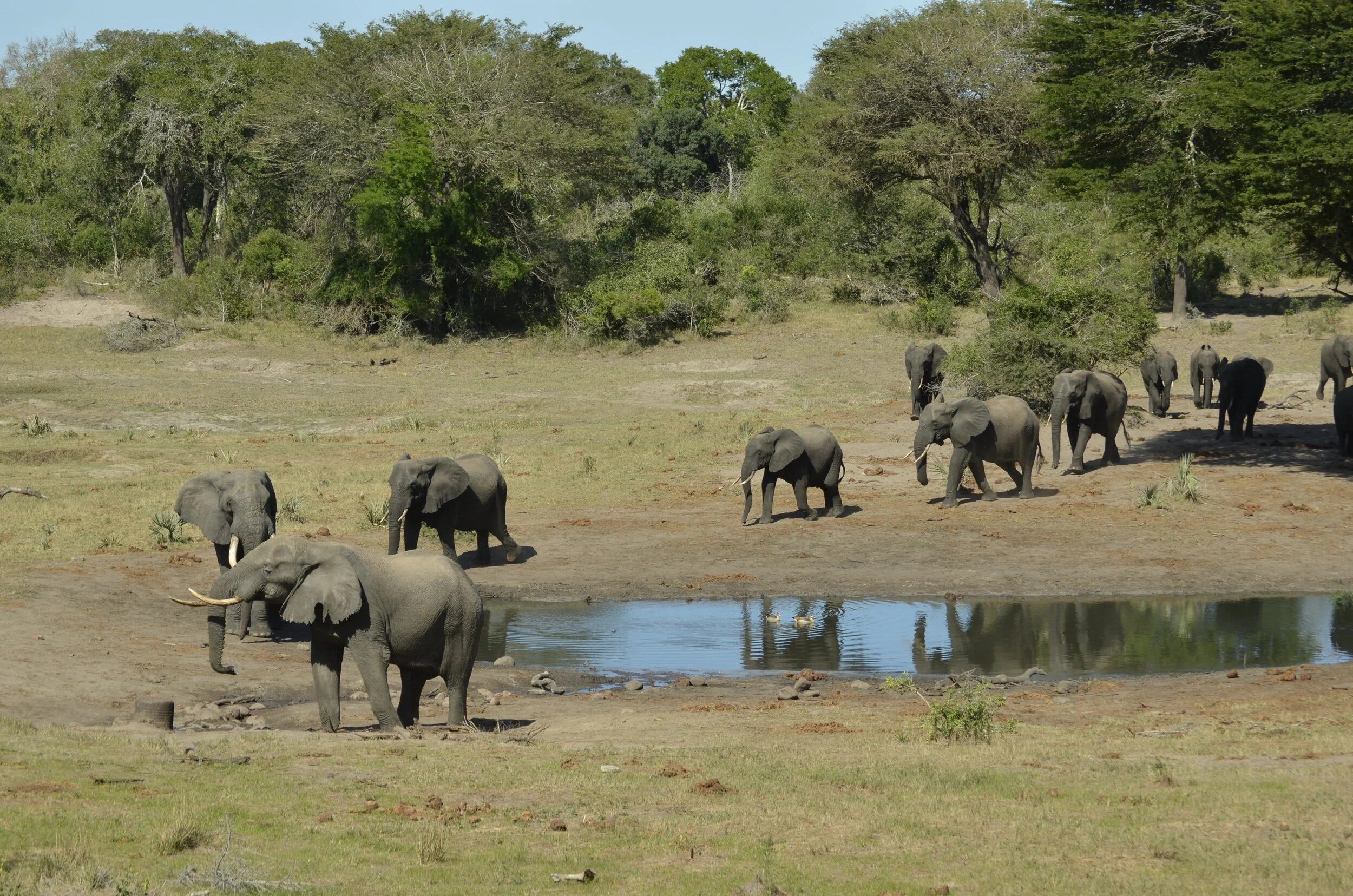The intensity of the stars in the southern hemisphere sky is like frozen fireworks. The majesty of the elephant herd approaching the watering hole leaves you in awe of their grace and power. The warm wind brushing through the tall, dry grass carries rich and spicy aromas. You have seen the wildlife programs on TV but there is no substitute for experiencing the wonders of the African bush in person. For many people who visit this is the journey of a lifetime.
This is one reason to go on safari: game viewing up close. Photo by Nick Bratton.
Going on a game-viewing safari is a major commitment of time and money. You want to make the most out of your trip and preparing for it can be stressful, even for experienced travelers. Am I taking the right gear? Will I be too hot? Will I have too much stuff or not enough? This series of articles in The Atlas is here to guide you through your preparations. I want you to have peace of mind knowing you are ready to have a brilliant journey. By following my strategy you will be able to immerse yourself in the wilderness experience instead of being frustrated by inadequate planning.
Being this close to a rhino is no time to find out you didn’t plan well. Photo by Nick Bratton.
Why should you consider my advice? I have spent six years in southern and eastern Africa, traveling to 14 different countries. During that span I worked as a whitewater rafting and canyoneering guide in South Africa, explored hidden places by boat, plane, and 4x4, and developed an approach to low impact travel as a Leave No Trace Master Educator. The approach I’m sharing is not merely a collection of packing tips or list of travel hacks, it’s a strategy for readiness with practical examples.
This is where it all began. My first safari at age six, into the Kalahari with my parents in a 1971 Land Rover. I’ve been seeking the beauty of the wilderness ever since. Photo by Michael Bratton.
The areas on which this series will focus are:
1. Mindset and research – how to think about packing and do your homework
2. Luggage – picking the right container
3. Personal bag – ready for anything
4. How to pack – the ABCs
5. Clothing – dress for success
6. Safari kit – what do you really need?
7. What not to bring
8. Preparing with purpose – thinking about your impact
Each chapter will introduce an element of the strategy, show examples for how to put it into action, and discuss tradeoffs of different choices. The examples all draw on personal experience and while they are not exhaustive, they are a representative selection of what has been proven to work from use in the field. After reading this series I hope you feel informed, confident, and excited to start your journey. I welcome feedback from travelers who use this strategy – did it allow you to focus on the experience? Are there adjustments you made that worked better for you? Please let me know. Ngiyabonga na hamba kahle (thank you and go well, in Zulu).
A note on product recommendations: as a writer my credibility is my only currency. I promise to you, the reader, that I receive no special consideration from any product manufacturer that I recommend, except where disclosed. It’s important to my personal journalistic integrity that you know I’m not getting kickbacks for promotions. I’m not an influencer. I pay the same price as you do for the products I mention here. If I don’t, I say so. When I endorse something it’s because it works for me in the field, not because of fealty to a sponsor. Also, because my recommendations are based on personal experience that is no guarantee that you will have similar results from a specific product. Caveat emptor; your mileage may vary.
The elusive wild dog, seen here in iMfolozi National Park. Photo by Nick Bratton




